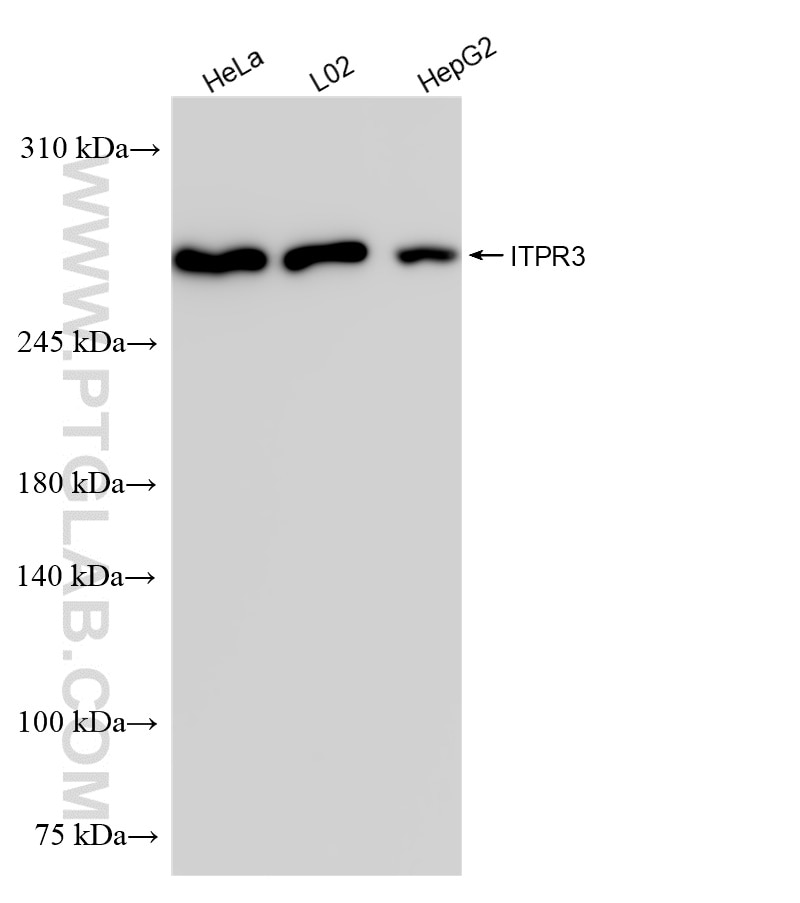Tested Applications
| Positive WB detected in | HeLa cells, L02 cells, HepG2 cells |
Recommended dilution
| Application | Dilution |
|---|---|
| Western Blot (WB) | WB : 1:2000-1:10000 |
| It is recommended that this reagent should be titrated in each testing system to obtain optimal results. | |
| Sample-dependent, Check data in validation data gallery. | |
Product Information
84693-1-RR targets ITPR3 in WB, ELISA applications and shows reactivity with human samples.
| Tested Reactivity | human |
| Host / Isotype | Rabbit / IgG |
| Class | Recombinant |
| Type | Antibody |
| Immunogen | Peptide Predict reactive species |
| Full Name | inositol 1,4,5-triphosphate receptor, type 3 |
| Calculated Molecular Weight | 304 kDa |
| Observed Molecular Weight | 250-300 kDa |
| GenBank Accession Number | NM_002224 |
| Gene Symbol | ITPR3 |
| Gene ID (NCBI) | 3710 |
| RRID | AB_3672109 |
| Conjugate | Unconjugated |
| Form | Liquid |
| Purification Method | Protein A purfication |
| UNIPROT ID | Q14573 |
| Storage Buffer | PBS with 0.02% sodium azide and 50% glycerol, pH 7.3. |
| Storage Conditions | Store at -20°C. Stable for one year after shipment. Aliquoting is unnecessary for -20oC storage. 20ul sizes contain 0.1% BSA. |
Background Information
ITPRs family have three members: ITPR1, ITPR2 and ITPR3. For ITPR3, it is associated with cervical squamous cell carcinoma, glioblastoma, cholangiocarcinoma and other cancers. Inositol 1,4, 5-triphosphate receptor type 3 (ITPR3) was found to be apical-located in bile duct cells, and disruption of lipid raft in the segregated bile duct unit (IBDU) redistributes ITPR3 and impairs Ca2+ waves. (PMID: 35580861, PMID:35852334)
Protocols
| Product Specific Protocols | |
|---|---|
| WB protocol for ITPR3 antibody 84693-1-RR | Download protocol |
| Standard Protocols | |
|---|---|
| Click here to view our Standard Protocols |



